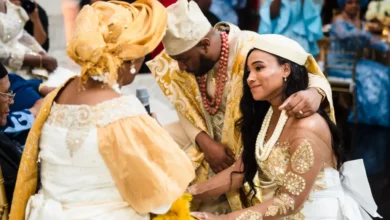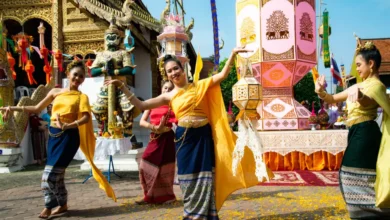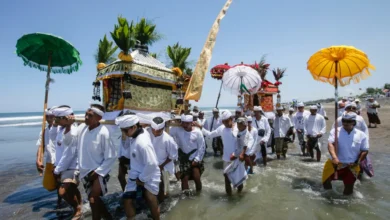In the highlands, rainforests, and coastal villages of Papua New Guinea (PNG) a land of over 800 languages and 1,000 distinct cultures ceremonial masks are not mere art. They are sacred vessels of identity, history, and spiritual power.
Carved from wood, adorned with natural pigments, and infused with ancestral symbolism, these masks serve as bridges between the living and the spirit world. From the crocodile-inspired creations of the Sepik River to the vibrant festival masks of the Highlands, each piece tells a story. Let’s journey into the heart of PNG’s mask-making traditions, where artistry and ritual intertwine.
The Role of Masks: More Than Meets the Eye
For Papua New Guinea’s tribes, masks are central to ceremonies marking initiations, funerals, harvests, and tribal warfare. They embody ancestral spirits, natural forces, and clan identities, transforming wearers into intermediaries of the divine.
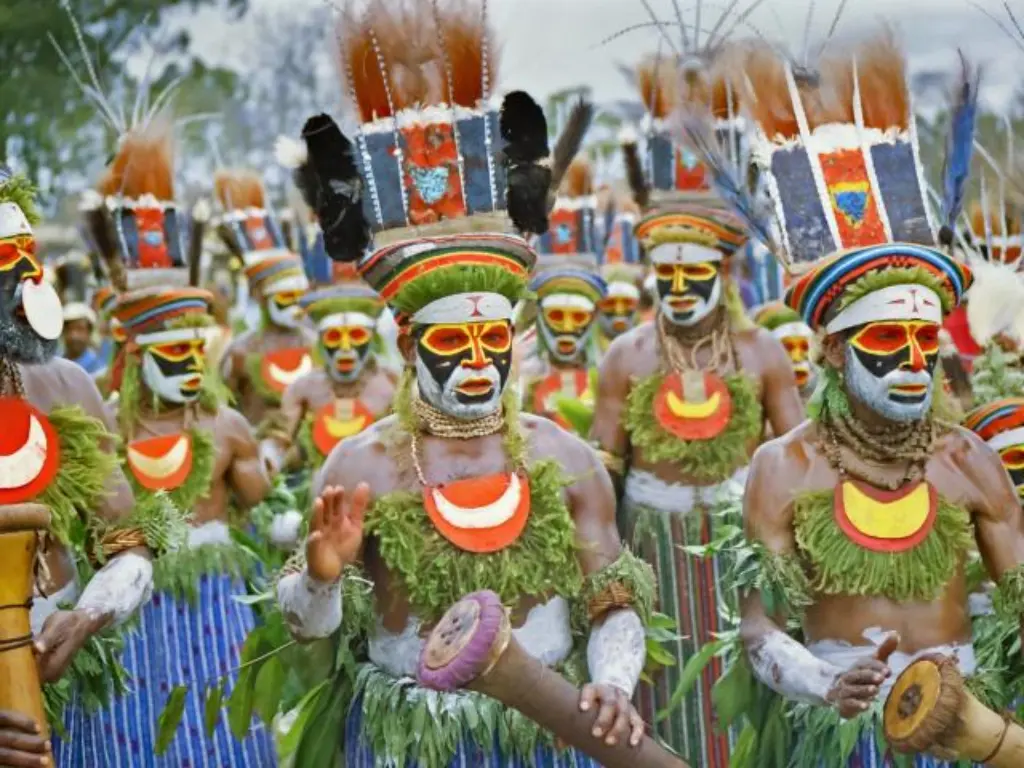
Key Functions of Ceremonial Masks
- Spiritual Connection: Masks channel ancestors or deities during rituals.
- Rites of Passage: Young men wear masks in initiation ceremonies to symbolize their transition to adulthood.
- Social Cohesion: Masked dances and festivals unite communities, reinforcing shared myths and values.
- Storytelling: Designs preserve oral histories, clan legends, and environmental knowledge.
Regional Styles: A Map of Mask Diversity
PNG’s masks vary dramatically by region, reflecting the island’s staggering cultural mosaic.
See also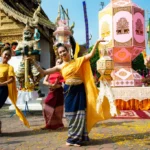 The Role of Traditional Clothing in Ceremonial Practices
The Role of Traditional Clothing in Ceremonial Practices
1. The Sepik River: Where Crocodiles Rule
The Sepik region, dubbed the “Amazon of the Pacific,” is famed for its wooden spirit masks (mai).
- Crocodile Motifs: Revered as creators and ancestors, crocodiles inspire elongated snouts, serrated teeth, and scaled patterns.
- Hooks and Curves: Masks often feature abstract spirals symbolizing the Sepik River’s winding flow.
- Initiation Rituals: Boys endure scarification to resemble crocodile skin, then don masks to embody the creature’s strength.
Famous Example: The Iatmul people carve towering ancestor poles topped with masks, used in Tambaran (spirit house) ceremonies.
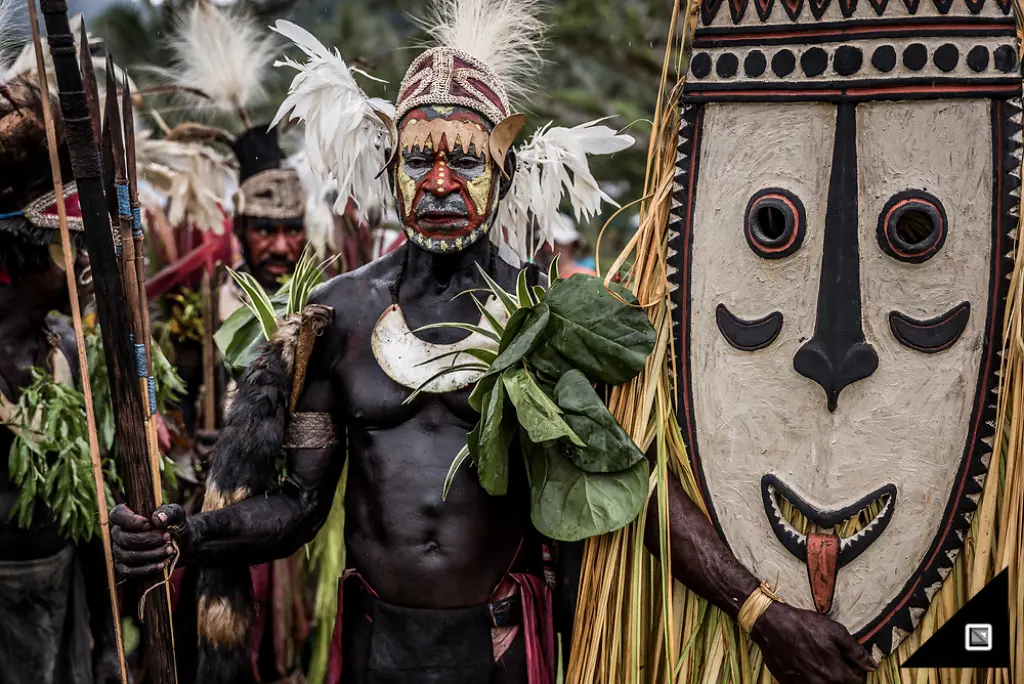
2. The Highlands: Feathered Spectacles
In the misty Highlands, masks are part of larger body adornments worn during Sing-sing festivals.
- Bilas (Decorative Art): Masks made from woven fibers, clay, and bird-of-paradise feathers symbolize wealth and status.
- Face Paint: Ochre, charcoal, and white clay create geometric patterns linked to clan identity.
- Warrior Culture: Masks with fierce expressions and boar tusks commemorate battle victories.
Famous Example: The Huli Wigmen of Hela Province craft towering wigs from human hair, paired with painted wooden masks for Diri Malu dances.
See also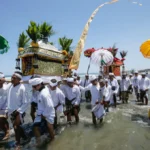 The Role of Traditional Clothing in Rituals and Ceremonies Across the Globe
The Role of Traditional Clothing in Rituals and Ceremonies Across the Globe
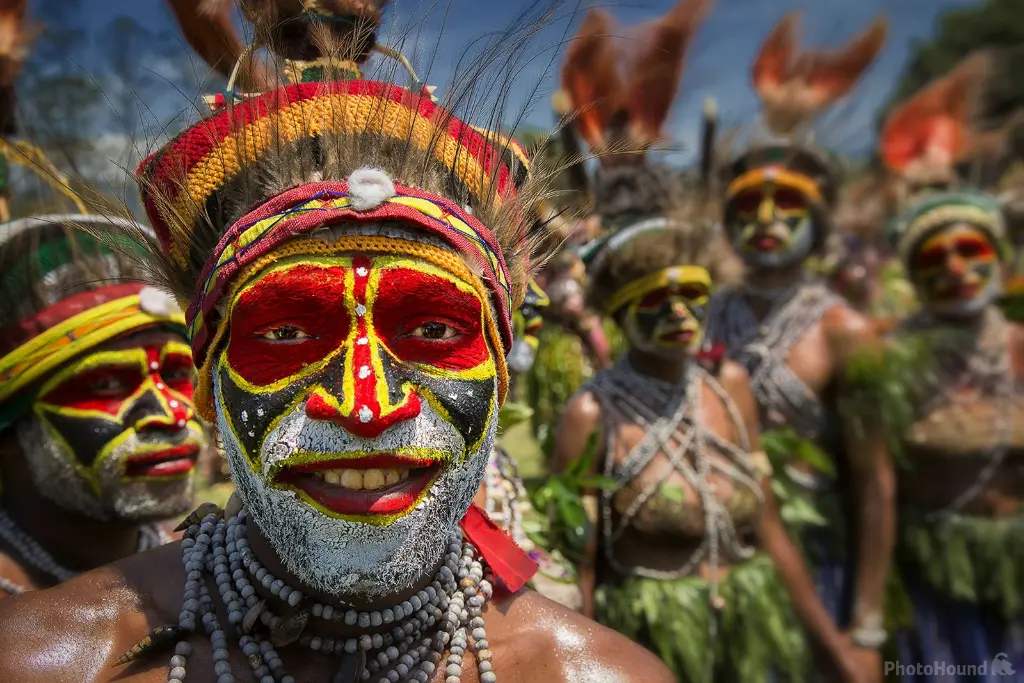
3. The Trobriand Islands: Masks of Harvest and Dance
Known for their yam harvest festivals, Trobriand Islanders create masks from coconut fiber and shells.
- Circular Designs: Representing the sun and lunar cycles, vital for agriculture.
- Kula Trade Symbols: Masks depict sea creatures, honoring the archipelago’s historic shell-currency exchange networks.
Famous Example: Bukutaku masks, worn during yam ceremonies, feature shell-inlaid eyes to “see” a bountiful harvest.
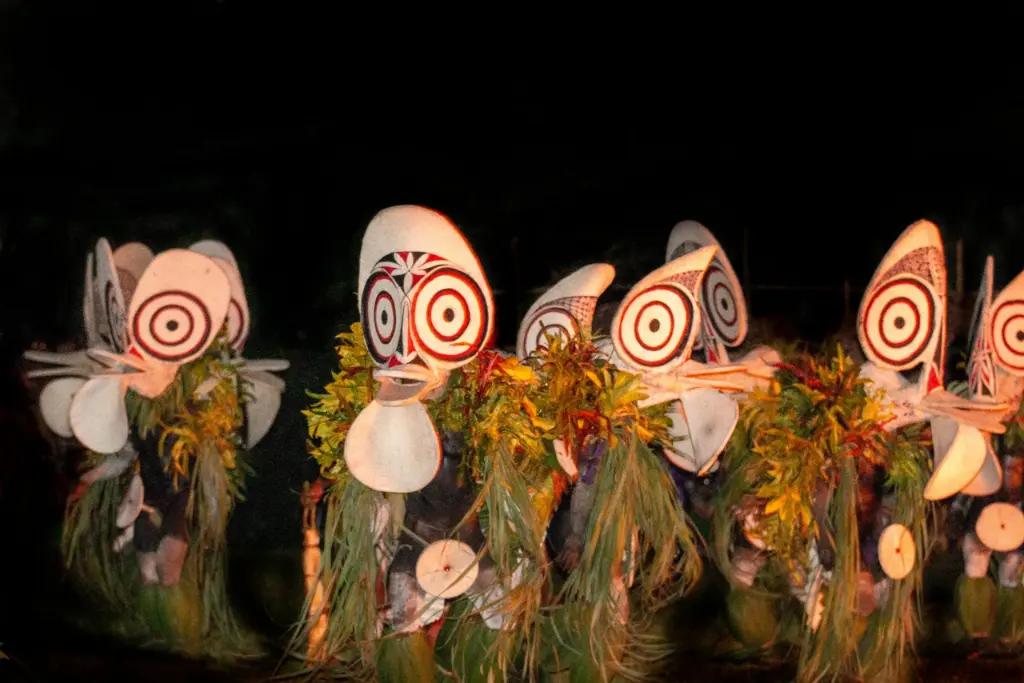
4. New Ireland: Malagan Masterpieces
In New Ireland, Malagan masks are carved for funerals to honor the deceased and guide their spirits.
- Intricate Carvings: Masks depict humans, fish, and birds, layered with symbolic patterns.
- Ephemeral Art: After rituals, masks are traditionally destroyed, emphasizing the cycle of life and death.
Famous Example: The Tatanua mask, with its asymmetrical design and dynamic curves, inspired early 20th-century European artists like Picasso.
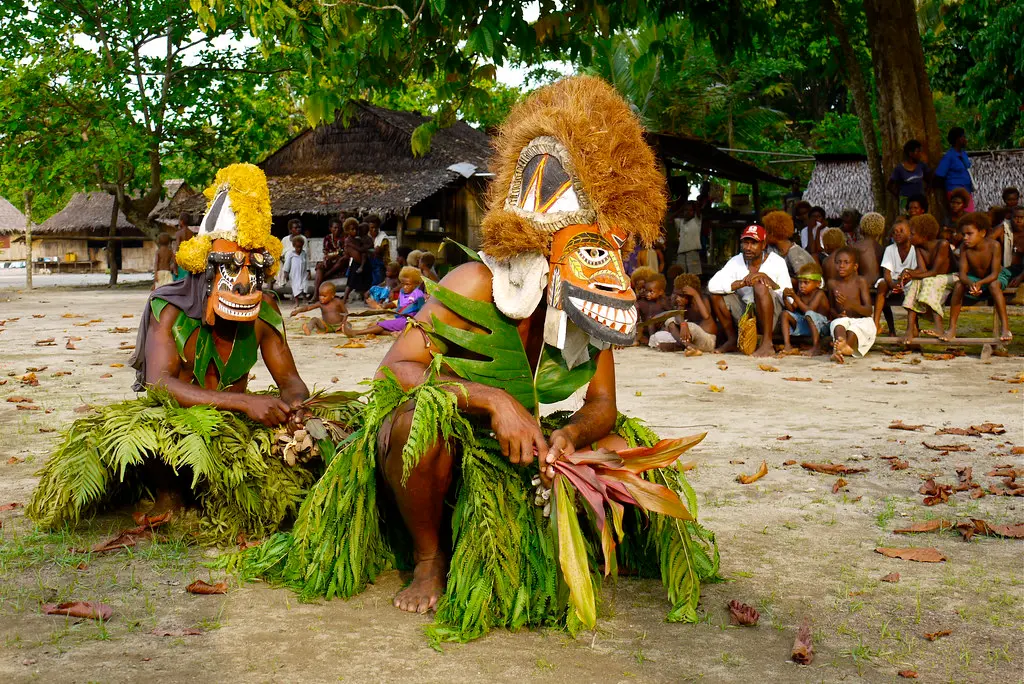
Crafting the Sacred: Materials and Techniques
Creating a ceremonial mask is a spiritual act, guided by ancestral knowledge.
Materials
- Wood: Lightweight balsa for large masks; durable ebony for heirlooms.
- Natural Pigments: Red ochre (earth), black (charcoal), white (limestone), and yellow (turmeric).
- Adornments: Cassowary feathers, cowrie shells, boar tusks, and seeds.
Process
- Ritual Preparation: Artisans fast or pray before carving to invite ancestral guidance.
- Carving: Using adzes and fire-hardened tools, masks are shaped over weeks.
- Painting: Pigments mixed with tree sap or water create lasting hues.
- Activation: A shaman may “breathe life” into the mask through chants or offerings.
Symbols and Meanings: Decoding the Designs
Every curve, color, and material holds significance:
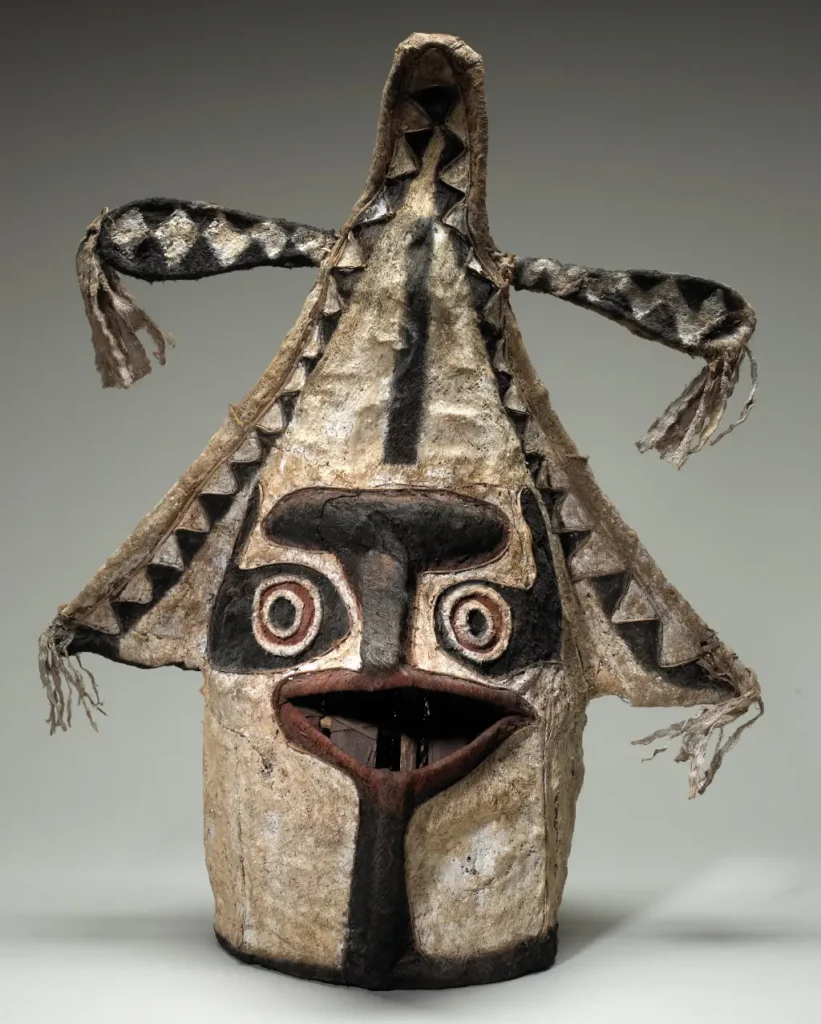
- Eyes: Large, almond-shaped eyes symbolize vigilance against evil spirits.
- Teeth: Sharpened teeth or shells denote warrior strength.
- Spirals: Represent water, fertility, and cosmic energy.
- Birds: Birds-of-paradise feathers link wearers to the sky gods.
Modern Challenges and Revival
Globalization and climate change threaten PNG’s mask-making traditions:
- Cultural Erosion: Younger generations migrate to cities, leaving fewer apprentices.
- Logging: Deforestation depletes rare woods like kwila and rosewood.
- Exploitation: Sacred masks are sometimes sold illegally to collectors.
Hope in Preservation
- Artisan Cooperatives: Groups like Sepik River Artists partner with NGOs to sell masks ethically.
- Festivals: The Goroka Show and Mount Hagen Cultural Festival revive mask traditions for new audiences.
- Museum Collaborations: Institutions like the PNG National Museum document and repatriate stolen artifacts.
Masks in Contemporary Culture
PNG’s ceremonial masks inspire global art and fashion:
- Runway Influence: Designers like Jean-Paul Gaultier have incorporated Sepik motifs into collections.
- Tattoo Art: Mask patterns appear in tribal tattoo designs worldwide.
- Film & Media: Masks feature in documentaries like BBC’s Human Planet, showcasing PNG’s cultural wealth.
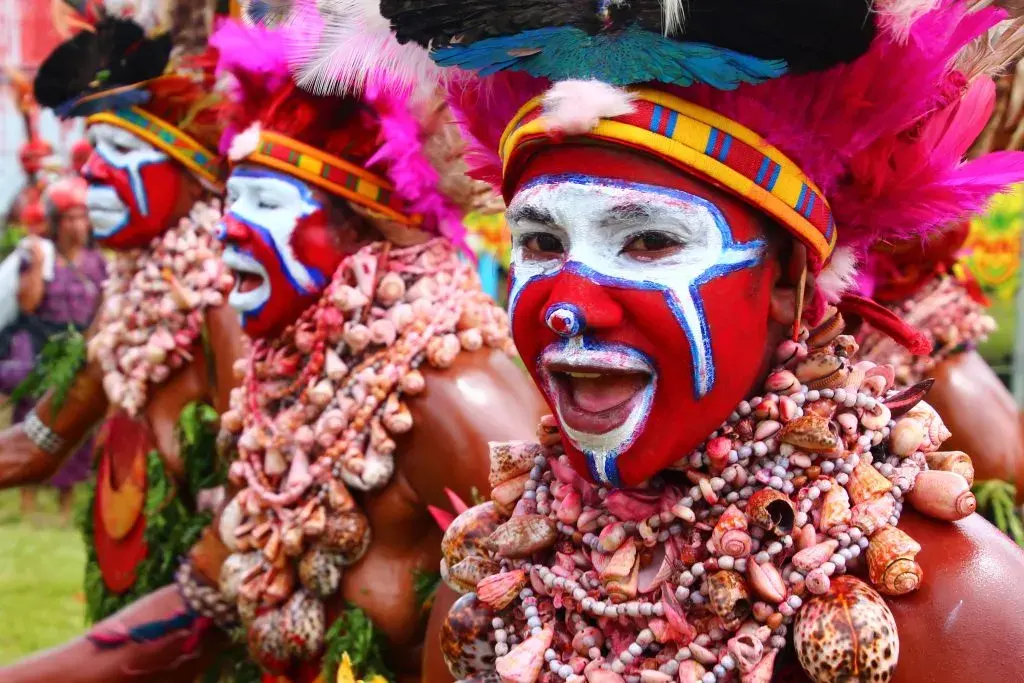
How to Support PNG’s Mask-Making Heritage
- Buy Ethically: Purchase from fair-trade cooperatives or certified dealers.
- Educate: Share the stories behind masks to combat cultural appropriation.
- Travel Responsibly: Visit PNG with eco-conscious tour groups that respect local traditions.
Conclusion: Guardians of the Unseen
Papua New Guinea’s ceremonial masks are more than art they are living dialogues with ancestors, nature, and identity. In a rapidly modernizing world, these creations remind us that some truths can only be expressed through beauty, ritual, and the silent language of symbols. As the Sepik people say: “The mask does not speak, but it tells everything.”
In the words of a Tolai carver: “When I carve, my grandfather’s hand guides the chisel. The mask is his voice, and my hands are its vessel.”
By honoring Papua New Guinea’s mask-making traditions, we safeguard a global heritage where artistry and spirituality are inseparable. Each mask is a testament to human creativity’s power to transcend time—and to the enduring voices of those who came before us.
